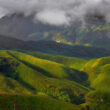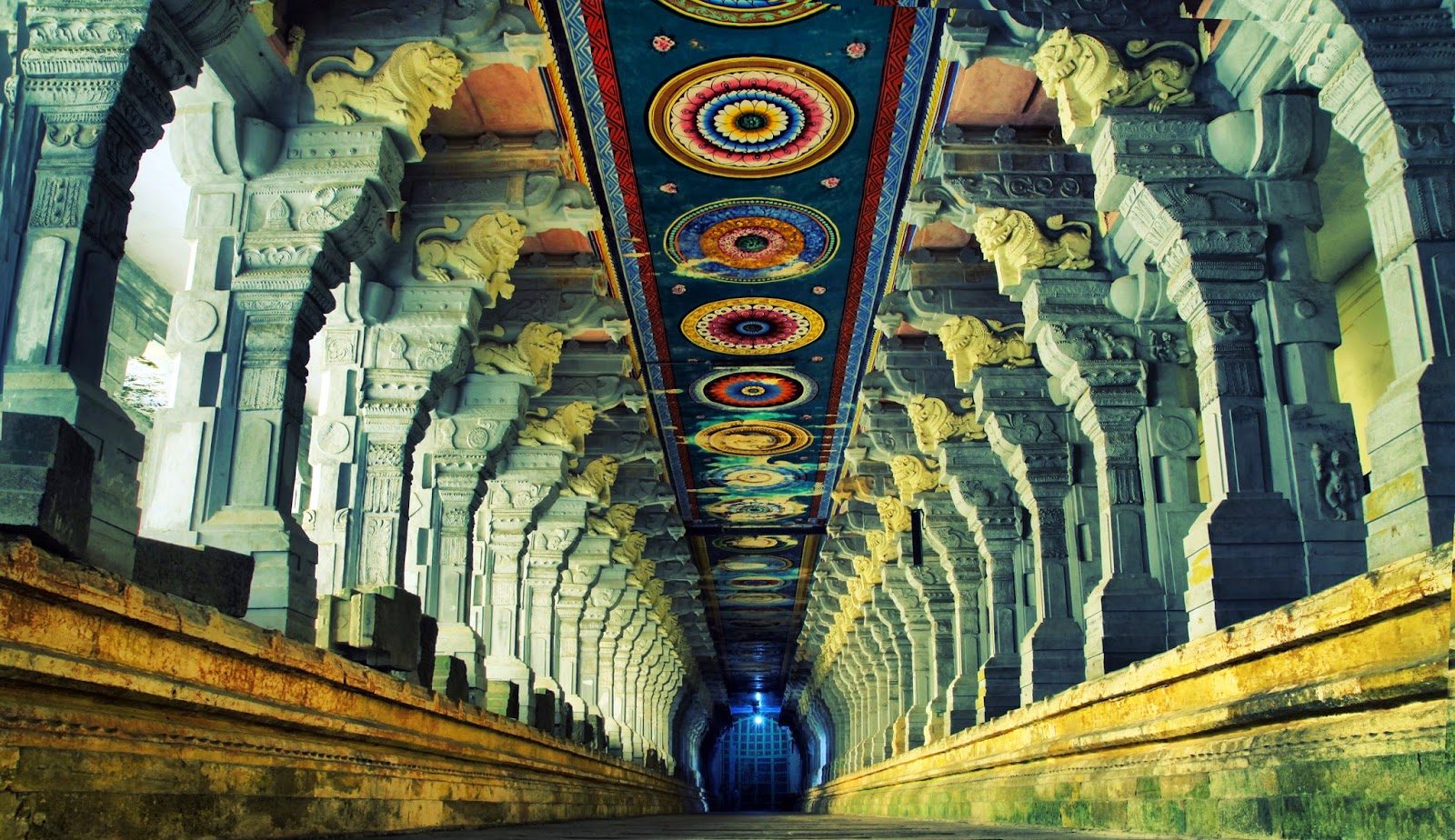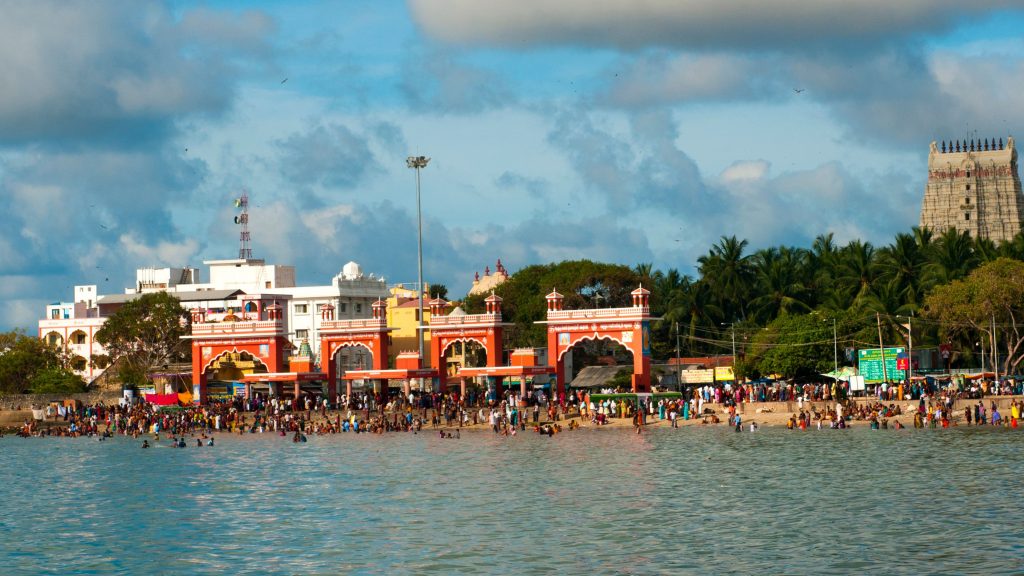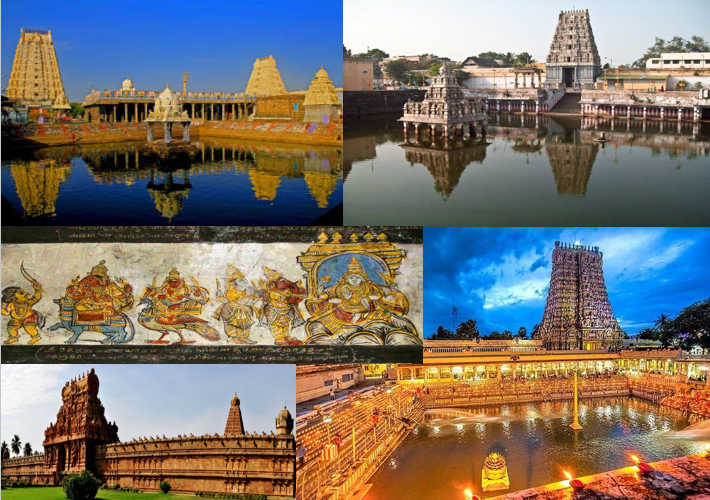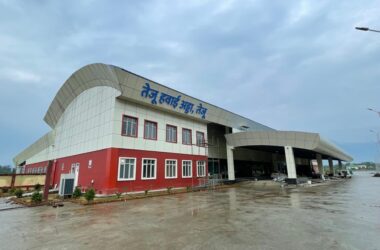Rameshwaram is of severe mythological importance, it may be scenically well endowed, but its true character is revealed in its collection of Lord Rama temples, each backed with a story from the epic Ramayana.
Lord Rama camped here, worshipped here, solidified his plans of rescuing his wife Sita from the demon king Ravana, sighed on having Sugreev’s support whose monkey army built him a bridge of stepping stones (Ram Setu) up to the Lankan coast, crossed over to the other side, slain Ravana, returned with his wife, worshipped Lord Shiva to absolve from any sin he may have committed during this war, took a holy dip in the sea, and installed a sand Shivalingam which later became the greatly revered Ramanatha Swamy temple.
Rameshwaram could be pilgrim-heavy, but there is still so much solitude, so much greenery, and so many heart-wrenching stories of bravery from the Ramayana, and real-life too. The drive on the Pamban Bridge over a flat blue sea will be a perfect prelude to your journey into the land of Lord Rama.
Ramanatha Swamy Temple
A brief stroll on the soft sands of Rameshwaram along the blue Bay of Bengal brings you to the ancient Ramanatha Swamy Temple steeped in mythology. A paradigm of Dravidian architecture, this temple will be the high point of your trip to Rameshwaram. Hindu mythology has it that at this site Lord Rama worshipped Lord Shiva to absolve from any sin he may have committed during his war against the demon king, Ravana. Ramanatha Swamy temple is an important pilgrimage center of the Hindus, also because it is one of the twelve Jyotirlingas – the holy abode of Lord Shiva.
Agnitheertham
About 100 meters from the famed Ramanatha Swamy temple is the spot where Lord Rama worshipped Lord Shiva to absolve himself for killing demon king, Ravana. You will spot ardent Shiva devotees taking a holy dip here, believed to wash away one’s sins. The water is very calm, and ideal for bathing. Pilgrims arrive at this seashore to perform rituals in honor of their ancestors.
Kothandaraswamy Temple
About 12 kilometers (7.5 miles) from main Rameshwaram town, is the legendary Kothandaraswamy temple, one of the few structures to have miraculously survived the great cyclone of 1964. Dedicated to Lord Rama, his wife Sita, brother Lakshman, Hanuman (the monkey god), and Vibhishan (brother of demon king Ravana), the shrine receives droves of pilgrims mostly from South India. Legend has it that Vibhishan, Ravana’s brother, shifted his loyalty at this site, and urged Lord Rama to let him be a part of his army. Many years later a temple was built here to commemorate this historical episode in Ramayana.
Nambu Nayagiamman Temple
About 8 kilometers (5 miles) from the main Ramanatha Swamy shrine, on the way to Dhanushkodi, is the 14th century Nambu Nayagiamman temple tucked away in the Ramnad district. The temple is believed to be built by the locals of Ramnad, out of love and respect for Lord Rama. As you approach the shrine, the synchronized chiming of bells will catch your ears. Gigantic bells dangle from the temple entrance, and a lovely garden spreads out around it.
Adam’s Bridge
The blurry land trail tracing its way across the ocean from Rameshwaram to northwestern Sri Lanka is well brought out in the satellite images by NASA in 2002. In addition to this, there are several equally illustrative aerial images of the mythical Ram Setu (aka Adam’s Bridge) – a strip of land straddling the ocean that connects the island of Rameshwaram with Mannar in Sri Lanka. The origin of this geological formation – as the scientists call it – takes root in Hindu mythology which draws inference to an episode from the great Sanskrit epic, Ramayana.
Ruins and the beach of Dhanushkodi
About 20 kilometers (12.5 miles) from mainland Rameshwaram, Dhanushkodi was a prospering port town, home of around 25,000 inhabitants. It was a peaceful, predominantly fishing community with a college, school, hospital, markets, an ancient Lord Rama temple, a church, a post office, and so much as a railway station.
But only until the fateful night of 22 December 1964. Close to midnight the sea suddenly swelled and lashed this little coastal village with gigantic tidal waves followed by a great cyclone. Wiping out in its wake the railway track and with it the train that was arriving at the Dhanushkodi railway station from Rameshwaram with 115 passengers aboard.
Ramjharoka Temple on Gandhamadana Parvatam
Gandhamadana Parvatam is the highest point in Rameshwaram, some 5 kilometers (3.12 miles) from the main town. Nestled on its pinnacle, the Ramjharoka temple houses the footprints of Lord Rama on a chakra (wheel). The place offers glorious views of the blue ocean below. You will also be able to view the iconic Ramanatha Swamy temple on the bank among many smaller temples speckled evenly across the island town. Ramjharoka is a significant pilgrimage point in Rameshwaram after the Ramanatha Swamy temple.
The Five-faced Hanuman Temple
This is an ancient temple; you can tell from the weathered-look of the structure, and an unmistakable old-world aura. Inside is a rare depiction of Lord Hanuman with five faces. Hindu mythology has it that Lord Hanuman revealed his five-faceted avatar at this site, and was soon after smeared with orange-colored vermilion. The revealed five faces with five different bodies were of Lord Hanuman, Lord Narasimha, Lord Adivaraha, Lord Hayagriva, and Lord Garuda. At this point, he, supposedly, rose above the five senses. The little temple also has an idol of the most loved deity of Rameshwaram, Lord Rama along with that of his wife, Goddess Sita, and brother Laxman.
A Drive on the Indira Gandhi or Pamban Bridge
Straddling the Palk Strait, the Pamban or Indira Gandhi Bridge links the Rameshwaram island with mainland India. Covering about 2.3 km, Pamban Bridge is touted as the second-longest bridge in the country (after the Bandra-Worli sea link), and an engineering marvel. Pamban Bridge actually refers to both the road and cantilever railway bridge. Opened for traffic in 1914, the railroad bridge doubles up as a double-leaf bascule bridge that can be raised to allow ships to pass from under. Originally, the bridge was for meter-gauge trains, but in 2007 Indian Railways upgraded the bridge to support broad-gauge trains on it.
Below are the articles for the History lovers –
Frequently Asked Questions About Rameshwaram
Q. Why is Rameswaram famous?
A – Rameswaram Temple is famous for being part of one of the twelve Jyotirlingas (lingas of light) of Lord Shiva in India. The temple is also famous for the fact that it is the southernmost ‘Jyotirlinga’ of India making it one of the top religious places in India.
Q. What is the specialty of Rameswaram?
A – Ramanathaswamy Temple is the most notable historical site of the city. Located in the center of the city, Ramanathaswamy Temple is a famous Hindu temple dedicated to Lord Shiva. The temple is one of the 12 Jyotirlinga temples, where Shiva is worshiped as Jyotirlinga which means “pillar of light”.
Q. What is the best time to visit Rameswaram?
A – The best time to visit Rameswaram would be from October to April because during this period, you will find the climate on a pleasant side. Winters in Rameswaram are mainly pleasant as the minimum temperature usually reaches around 17 ° C in this season.
Q. Who established the Rameswaram temple?
A – Ramanathaswamy Temple (Irāmanātasvāmi Kilyil) is a Hindu temple dedicated to Lord Shiva located on the island of Rameswaram in the state of Tamil Nadu, India. It is also one of the twelve Jyotirlinga temples.
Q. Is it safe to roam and roam Rameswaram at night?
A – Rameswaram can be very unsafe if you do not take your precautions. Make sure that you are always alert and have the necessary security measures handy. If you are traveling, just stick to where the crowd is and you should be good.
Q. Is one day enough to go to Rameswaram?
A – Yes. One day is enough to cover all the places in Rameswaram, except for Spadiga Linga Darshanam, where one gas stays for one night as such dozen are held daily from 4.30 am to 6 pm in the Ramnavaswamy temple.
Q. How can I go to Rama Setu?
A – Can be reached by driving from Rameswaram to Dhanushkodi through Adam’s bridge as there is no road connectivity after the 1964 cyclone. From Dhanushkodi, visitors can reach the Ram Setu bridge from a local van. Here, tourists can visit local temples and see the floating stones used in the bridge.
Q. Why are there no waves in Rameswaram?
A – If U needs the right reason, it is because the sea is too shallow. Of course it goes that way, but you would not have imagined the sea, you will find it there. Just behind the Rameswaram temple, the Samudra Shalva is of the water type. Meaning, there are no waves in the ocean.
Q. Is there a dress code for Rameswaram temple?
A – There is definitely no special dress code in the Rameswaram temple. … But, wearing of jeans is not allowed in the Rameswaram temple. You can get on any formal wear yet a dhoti or pajamas is more recommended for men. Women will work for saris or churidars.
Q. How long does it take to visit Rameswaram?
A – However, it takes less than an hour to visit Rameswaram Temple. But, if you are going there during peak time, i.e. Shivratri, Karthik Masam and other occasions, it can take around 3 to 4 hours to explore the temple.
Q. In which sea is Dhanushkodi?
A – Dhanushkodi Beach is located at the tip of Rameswaram Island. In this beach, the Bay of Bengal and the Indian Ocean merge which is known as Arikhal Munai in Tamil. Before 1964, Dhanushkodi was a busy, crowded city. Dhanushkodi Beach attracted thousands of tourists every day.
Q. Is Rameswaram temple open in Covid?
A – Ramanathaswamy Temple in Rameswaram and Meenakshi Amman Temple in Madurai reopened after 165 days, announcing new rest as part of MHA’s Unlock 4..
Q. Why is Rameswaram considered sacred by pilgrims?
A-Rameswaram is also a popular pilgrimage center. The city holds special significance for Hindus as one of the sacred Char Dham – the four sacred residences associated with the incarnation of Lord Vishnu. Hindus believe that traveling to all the four dhams will help them attain moksha (liberation from rebirth).
Q. Why do the stones of Rama Setu float?
A – According to Hindu mythology, Ram Setu floating stone was built by Lord Rama. The stone floats on the water due to the name Rama written on the rocks. Pumice stone Ram Setu is stone that float on water. Pumice stone is made of hard foam of lava that comes out when a volcano erupts.
Q. Is Ram Setu visible from space?
A – The US space agency says that photographs taken by its astronauts do not prove the existence or otherwise of a man-made bridge described in the Ramayana. The US space agency NASA says the photographs taken by its astronauts do not attest to the existence or otherwise of the man-made Ram Setu bridge described in the Hindu epic Ramayana.
Q. Can you go to Sri Lanka from India?
A – On Friday afternoon, the 47-year-old achieved the unique feat of successfully swimming in the Pulk Strait, more than 30 miles through the open sea between Sri Lanka and India, in 13 hours 45 minutes.
Q. Ola is available in Rameswaram?
A – There is no hailstorm or uber available in Rameswaram. On dropping to the railway station and the temple you will only get Rs. 200 or 300. Book Cab It will go on sightseeing such as Pamban Bridge, Villondi Theertham and Vibhushan Wortham, and Kalam Memorial.
Q. How can I plan a trip to Rameswaram?
A – Rameswaram goes to the Pamban Bridge on the way, then check-in at the hotel. Hanuman Temple, Navapanigram, Ramanathaswamy Temple, Jyotirlinga Darshan at Kanyakumari, situated at the southern tip of peninsular India, offers a unique experience of sunrise and sunset.
Q. Mobile is allowed in Rameswaram temple?
A – Mobile and camera are not allowed inside.
Q. How far is Dhanushkodi from Rameswaram?
A – Dhanushkodi, a place 20 km from the main city of Rameswaram, is the place where you can see Rama Setu.
Q. What does NASA have to say about Ram Setu?
A – After the news of NASA imagery visits, NASA gave a statement that they never said that the Ram Setu is man-made, or 1.75 million years old. The Delhi Science Forum wrote how religious fundamentalists coined these claims.
Q. Rameswaram has an airport?
A – Rameswaram does not have its own airport. To reach Rameswaram via flight, you have to land at Madurai Airport, which is the fourth busiest airport in Tamil Nadu after Chennai, Coimbatore.
Q. What is the distance between Rameswaram to Sri Lanka?
A – Rameswaram is located around 224 KM from Sri Lanka, so if you travel at a consistent speed of 50 KM per hour you can reach Sri Lanka in 26 hours and 27 minutes. Travel time to Sri Lanka can vary depending on your bus speed, train speed, or the vehicle you use.
Q. Is bathing in Rameswaram mandatory?
A – It is not compulsory or should be. over a year ago. over a year ago. This is a belief but optional because only a small proportion of devotees do so because all the kunds are not together and therefore walking in the temple complex soaked in water is also not so convenient.


